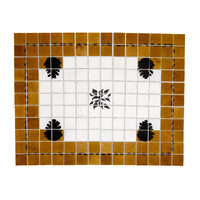Locus et Homines I
Item
-
Title
-
Locus et Homines I
-
Format
-
en
JPG
-
Date
-
2021
-
Description
-
Artwork created and submitted in the context of the ECHO II project which was dedicated to inviting artists in residence to create original artworks, inspired by selected local traditions
-
Type EDM
-
en
Image
-
Rights
-
This work is licensed under a Creative Commons Attribution-NonCommercial 4.0 International License.
-
Digitisation equipment
-
Equipment used: Cameras: Canon 5D Mark IV, Canon 6D | Camera Type: DSLR | Lenses: Canon EF 24-70mm f/2.8L II USM, Canon EF 16-35mm f/2.8L II USM, Canon EF 85mm f/1.8 USM. Image processing software: Adobe Photoshop 22.4 (Windows). Digitisation of artwork: Panagiotis Diapoulis
-
Bibliographic Citation
-
“Locus et Homines I”. 2021. Artist: Katerina Karatzaferi . Source: https://echo-heritage.eu/myomekas/s/repository/item/1321. License: CC BY-SA 4.0.
-
Statement of Responsibility
-
The art residency has been co-funded by the European Union and is part of the project ECHO II - Traditions in Transition, Creative Europe Programme. The artwork was produced with the financial support of the European Union. Its contents are the sole responsibility of its creators and do not necessarily reflect the views of the European Union.
-
Abstract
-
"The artworks titled “Locus et Homines” consists of three individual sections. The inspiration for these artworks was the herbal world, the folk tradition and cultural heritage of Spetses. In addition, the creation of the artworks was significantly influenced by the communication with the inhabitants of the island. A wooden “pebble mosaic” is composed on the floor. Wood, as a construction material, was very important for the inhabitants of Spetses, as they used to build their boats with it. The rich pine forest of the island was the source of raw material for this practice. Black and white pebble mosaics decorate sidewalks and inner courtyards of houses on the island. Wooden square pieces compose a “pebble mosaic”. Patterns inspired by the natural wealth of the island were imprinted on it with white and black acrylic. These two colours were used in this artwork, as they are the most common ones in the pebble compositions of the island." Katerina Karatzaferi
 Locus et Homines I
Locus et Homines I
